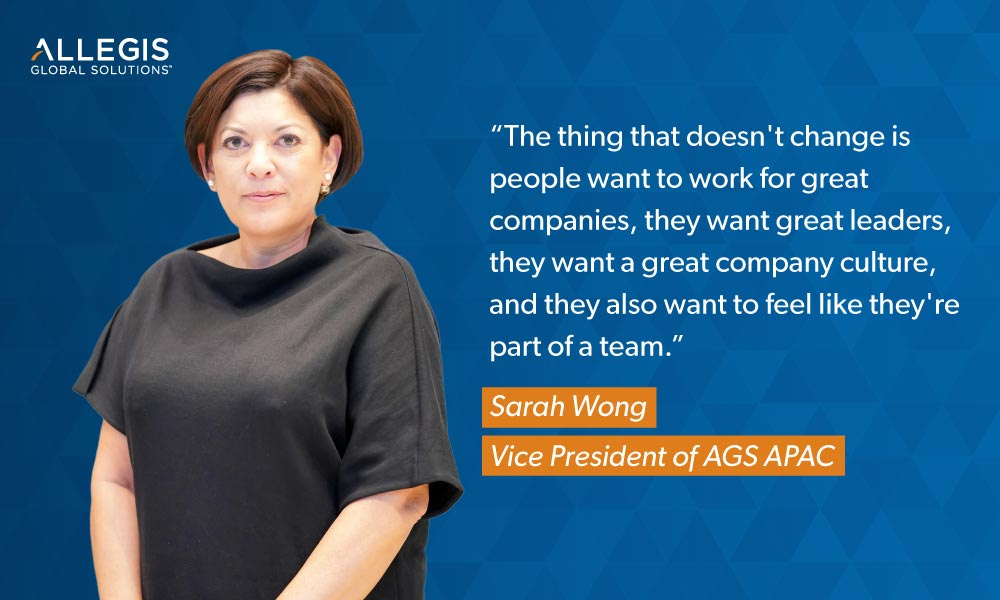
The pandemic has changed how we work – for the better. Here's how to secure the right talent in a changed market

This article was produced in partnership with Allegis Global Solutions.
Allegis Global Solutions (AGS) is the leading provider of talent solutions. We transform the way the world acquires talent in order to deliver immediate and lasting impact. Through decades of industry experience, and with services across 100+ countries, we know what it takes to innovate, consult, design, and implement successful, creative, and data-driven talent solutions across all workforce categories. Learn more here.
Record low unemployment rates and a major mindset shift in what workers want and value have combined to create a unique business challenge, with companies struggling to secure top talent across a broad variety of roles and industries.
“Organisations face hugely different workforce expectations post COVID. People want to work from home - work from anywhere really. Companies that could were initially flexible, but a lot are starting to encourage people back to the office. And while some workers like being together in-person, others are not up for it,” says Sarah Wong, Vice President of Allegis Global Solutions (AGS).
The new world of work requires a fresh approach if organisations want to win the talent wars.
“There's still a lot of reliance on what I'd say are legacy processes and systems around pay, rewards, and benefits, which probably aren't keeping pace with the way that people want to work these days. There's been very little workforce agility, and there's still the expectation of a very stable workforce,” she says.
While Wong says shareholders used to be the understandable focus of many businesses, with the great resignation looming worldwide, there has been a shift in power to the workforce - at least for now.
Skill shortages, a lack of workforce agility and changing workforce expectations are the three key issues Wong predicts the workplace will be wading through when it comes to attracting and retaining quality talent.
“Companies [currently] use very conventional ways to get their work done – leaning on the outdated, full-time employee-focussed model. But the world has changed. Right now, many organisations aren't agile enough to properly review the way they get work done, and they don't have a full view of the workforce, so they can't make the right decisions about the best way to drive positive business outcomes,” she tells HRD Asia.
Wong says current technology makes it tough to see everybody's skill sets inside and outside the organisation – something AGS is focussed on fixing with the launch of its Universal Workforce Model – an outcome-based approach to getting work done.
She says that for many organisations, managers may have access to technology tools, but self-managed approaches leave a lot of value left unrealised with more advice and guidance needed to act on insights, particularly when it comes to workforce decisions and how to get tasks done.
“Having so many different systems to look at, think about and quantify is a problem. Managers have a lot of data, but they don't always have the right context for how to use that data and how to make it relevant to them,” Wong says.
“When we help organisations to integrate their platforms, automate, and give them a full view of their workforce, then we can really start demonstrating how to access talent to do jobs in the right way.”
She says companies also need to ensure that they have an accurate view of the most efficient and effective way of getting work done.
“We believe workplaces need to deconstruct roles and take a much more task-based approach to what needs to be achieved, and then optimise the work channels – the best way to get the work done.”
“Once you have the tasks you need achieved, you can ask - should you outsource it? Should you hire a contractor? Have you got those skills in house already? Does it need to be a full-time employee?”
In other words, a best practice of AGS’ Universal Workforce Model is not to jump to a resource decision before identifying the desired outcome first. The next step is to deconstruct the work needed to be done to achieve that goal. Then – and only then – is it time to assess the best resource channel to complete those tasks – whether a full-time employee, gig worker, freelancer, contractor, consultant, etc.
Another area of focus organisations are rethinking is their employer brand and if they’re doing all they can to attract their future workforce.
“What we've seen over the last year in particular is there is some really successful employer branding out there, promising a lot to their workforce. But while they may be great at bringing people in, it’s important to ask if they are really delivering the experience that the brand promised in the first place,” Wong says.
Having a future-forward view of how your company will be getting the work done is a step towards achieving this, allowing you to identify ways to work with more flexibility and providing opportunities for meaningful career moves that meet all parties' interests.
“The thing that doesn't change is people want to work for great companies, they want great leaders, they want a great company culture, and they also want to feel like they're part of a team.”
As to the future of talent acquisition and workforce management, Wong says they are already some early benefits across AGS APAC of breaking down roles into tasks and exploring flexible work arrangements where feasible.
“We have been able to see very clearly that some work can easily be done anywhere, and which jobs we're doing that we don't need to have permanent people for. So we are learning a lot of lessons along the way,” Wong says.
The way that we look at work, at talent acquisition and at workforce management is set for a big reset moving forward.
“It's a really exciting place to be.”